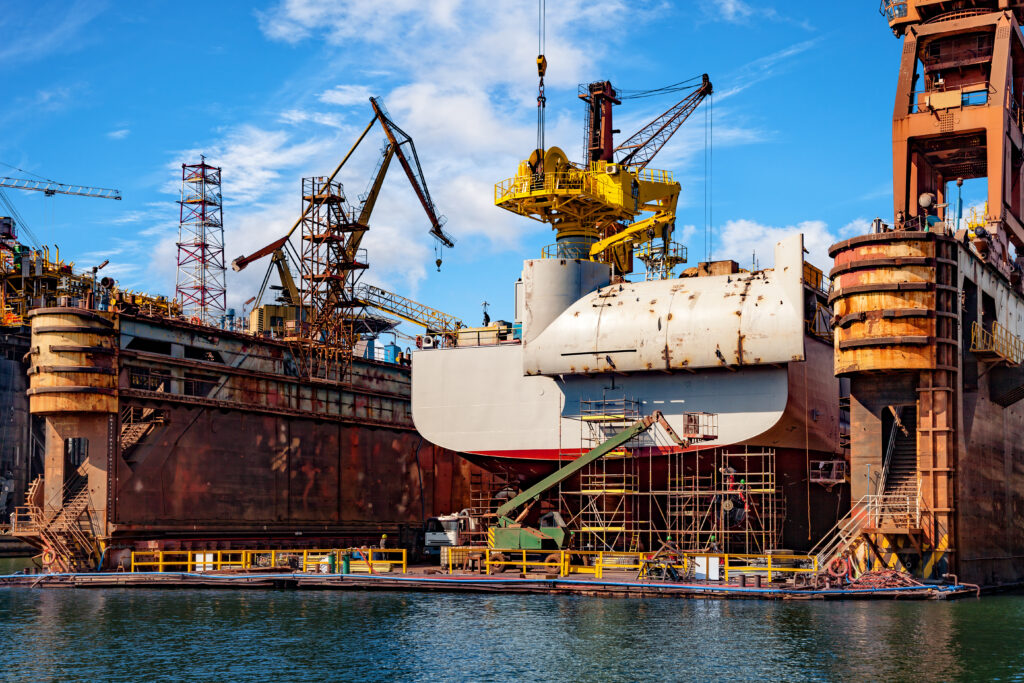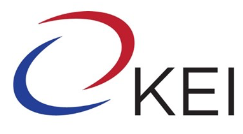The Peninsula
The Future of U.S.-Korea Shipbuilding

South Korean officials proposed “support[ing] the revitalization of the U.S. shipbuilding industry” as an avenue for cooperation during the two-plus-two tariff negotiations between the United States and South Korea on April 24, 2025. Moving forward, future negotiations by the United States on trade will continue to involve partnerships in areas where allied countries such as Korea and Japan have maintained global leadership, including shipbuilding.
After unveiling the “Restoring America’s Maritime Dominance” executive order on April 9, President Donald Trump stated, “We may buy some ships from other countries that we’re close to and that do great jobs with ships,” while conceding that his administration “would have to go to Congress” to get it done. This statement echoed the president’s comments from January: “We don’t build ships anymore. We want to get that started. And maybe we’ll use allies.” Indeed, Trump’s first official communication with then President Yoon Suk Yeol following his electoral victory similarly broached the topic of involving South Korea in U.S. shipbuilding.
There are several factors driving such efforts at cooperation. The U.S. maritime base is confronted with the dual challenge of a dearth in the U.S. commercial fleet and strains associated with new production targets under the 2025 Shipbuilding Plan. A Government Accountability Office (GAO) study from March 11 cites that the Navy’s shipbuilding industrial base is “experiencing significant infrastructure and workforce challenges that contribute to persistent schedule and cost shortfalls for shipbuilding programs.” Both issues necessitate a systemic overhaul of the U.S. shipbuilding industry and its associated maintenance, repair, and overhaul (MRO) capacity. South Korea’s specialization in this industry presents the United States with potential new opportunities for leveraging partners to meet its fleet maintenance and force projection goals.
Collaboration with Korea in these areas has so far centered on investments for revitalizing U.S. shipyard capacity and cooperation on AI technology and MRO. Then Secretary of the Navy Carlos Del Toro visited South Korea in February 2024 and kickstarted discussions to attract investments from Korean firms in U.S. shipyards. Shortly thereafter, in June 2024, Hanwha Group announced their acquisition of the Philadelphia “Philly” Shipyard, which was subsequently cleared by the Committee on Foreign Investment in the United States (CFIUS) last September. Current Secretary of the Navy John Phelan is following suit, pitching “dual-use” shipbuilding to U.S.-Japan cooperation and visiting South Korea to explore additional investments. This adds to partnerships with HD Hyundai by Palantir Technologies and Anduril Industries to develop autonomous naval systems and smart shipyard platforms. Along with continued shipyard investments and autonomous technology partnerships, the next steps for the United States and Korea will likely feature commercial shipbuilding and MRO for naval support vessels.
Recent Major U.S.-Korea AI Maritime Application Partnerships
| Date | American Entity | Korean Entity | Project |
| April 14, 2024 | Palantir Technologies | HD Hyundai Heavy Industries | MOU to develop AI-based unmanned surface vehicles (USVs). |
| April 13, 2024 | Anduril Industries | HD Hyundai Heavy Industries | Strategic partnership to develop autonomous naval systems. |
| September 20, 2022 | Palantir Technologies | HD Hyundai Heavy Industries | Contract to introduce Palantir’s Foundry-operating system across its shipyards as part of Hyundai’s “Future of Shipyard” project to develop smart shipyards by 2030. |
| January 4, 2022 | Palantir Technologies | Hyundai Heavy Industries Group | MOU for Palantir to build data platforms for Hyundai’s core shipbuilding, offshore engineering, energy, and industrial machinery businesses. |
Recent Major U.S.-Korea Shipyard, MRO, and Master Ship Repair Agreement (MSRA) Developments
| Date | U.S. Entity | Korean Entity | Project |
| March 13, 2025 | USNS Wally Schirra | Hanwha Ocean | Completion of the first MRO of a U.S. navy ship at a Korean shipyard. |
| February 27, 2025 | Secretary of Commerce Howard Lutnick | Minister of Trade, Industry and Energy Ahn Duk-geun | Agreement to establish intergovernmental trade consultative body for discussions on bilateral issues including shipbuilding cooperation. |
| September 17, 2024 | American Bureau of Shipping (ABS) | HD Korea Shipbuilding & Offshore Engineering | MOU for the development and certification of cooperation on advanced zero-carbon ships. |
| July 22, 2024 | U.S. Naval Supply Systems Command | Hanwha Ocean | MSRA for Hanwha Ocean to participate in the MRO of U.S. naval vessels. |
| July 12, 2024 | U.S. Naval Supply Systems Command | HD Hyundai Heavy Industries | MSRA for securing HD Hyundai’s qualification to participate in the of U.S. naval vessels. |
| June 20, 2024 | Philly Shipyard | Hanwha | Purchase agreement for Hanwha to acquire the ownership of Philly Shipyard for $100 million. |
| April 24, 2024 | Philly Shipyard | HD Hyundai Heavy Industries | MOU for MRO of U.S. Navy and official vessels. |
| April 11, 2024 | GE Aerospace | HD Hyundai Heavy Industries | MOU to develop marine propulsion systems and enhance cooperation on MRO. |
Pursuant to the meetings between the U.S. and South Korean governments in March, both countries committed to the establishment of an intergovernmental working group for engagement in shipbuilding cooperation. For these measures to be effective, however, revisions to or exemptions from U.S. legislation would be necessary. Defense procurement laws such as the Buy American Act or the Byrnes-Tollefson Amendment to the Mutual Security Act of 1951 impose strict limitations on the purchase or construction of foreign-derived components and vessels for the U.S. military. The Merchant Marine Act of 1920, otherwise known as the “Jones Act,” likewise requires that ships operating between U.S. ports must be built, owned, and operated by U.S. citizens or entities. According to a 2018 analysis from the Cato Institute, this act has served to reduce the drive for competition in the maritime sector, thereby escalating costs, reducing demand for waterborne shipping, and driving down orders for ships—all of which subsequently affected appetite for investment and the supply of labor.
Congress is aware of the challenges these regulations pose to rebuilding the U.S. shipbuilding industrial structure. The rethinking of certain regulations could allow room to incorporate allies that have highly sought-after technical expertise, surpluses of available labor and capital, and extra space at their shipyards to service and build U.S. vessels. Accordingly, the Ensuring Naval Readiness Act and the Ensuring Coast Guard Readiness Act have opened the door for integrating U.S. allies into the construction and maintenance of U.S. naval vessels. If made into law, both would allow certain allied countries to supply the U.S. Navy or Coast Guard with vessel construction or outright purchase U.S. ships. Meanwhile, the SHIPS for America Act, which aims to grow the U.S. commercial fleet to 250 vessels in the next ten years, similarly includes provisions for U.S. allies in its procurement guidelines.
Taken together, these measures amount to a blueprint for deeper U.S.-Korea shipbuilding integration. By leveraging Korea’s proven record in commercial ship design and U.S. strategic demand for vessels, the United States stands to gain both economically and militarily. The SHIPS for America Act, Ensuring Naval Readiness, and Ensuring Coast Guard Readiness Acts introduce legislative scaffolding, while agreements such as the HII–HD Hyundai Heavy Industries MOU offer a near-term model of industry-level collaboration. Aligning these new opportunities with ongoing efforts to establish an office of shipbuilding in the White House could dramatically accelerate the timeline for renewing the U.S. maritime base by enabling coordination through a centralized body with the potential authority to harmonize federal initiatives and identify areas for capacity expansion.
It is possible that future initiatives between the United States and Korea could involve investment concessions in exchange for tariff alleviation or mirror domestic manufacturing subsidy programs, such as those created by the CHIPS and Science Act and the Inflation Reduction Act. The two laws were successful clarion calls for foreign companies to transfer their capital and skills to the United States, offering a proven blueprint for Korean shipyard investments to receive U.S. subsidies. Additional efforts could also draw from broader U.S. technology diffusion models by enabling trusted shipbuilding firms to access select capabilities under special licensing frameworks.
Without careful legislative efforts, however, existing restrictions on foreign involvement will limit the impact of such partnerships. The path forward will likely involve a suite of regulatory adjustments, workforce training expansions, and creative financing solutions—many of which are already outlined in pending bills in Congress. If these procedural and bureaucratic hurdles can be cleared, bilateral cooperation in shipbuilding could become a linchpin of U.S. maritime security and economic strategy for decades to come.
Tom Ramage is an Economic Policy Analyst at the Korea Economic Institute of America. Yohan Moon is a Research Intern at the Korea Economic Institute of America. The views expressed here are the authors’ alone.
Photo from Shutterstock.
KEI is registered under the FARA as an agent of the Korea Institute for International Economic Policy, a public corporation established by the government of the Republic of Korea. Additional information is available at the Department of Justice, Washington, D.C.
